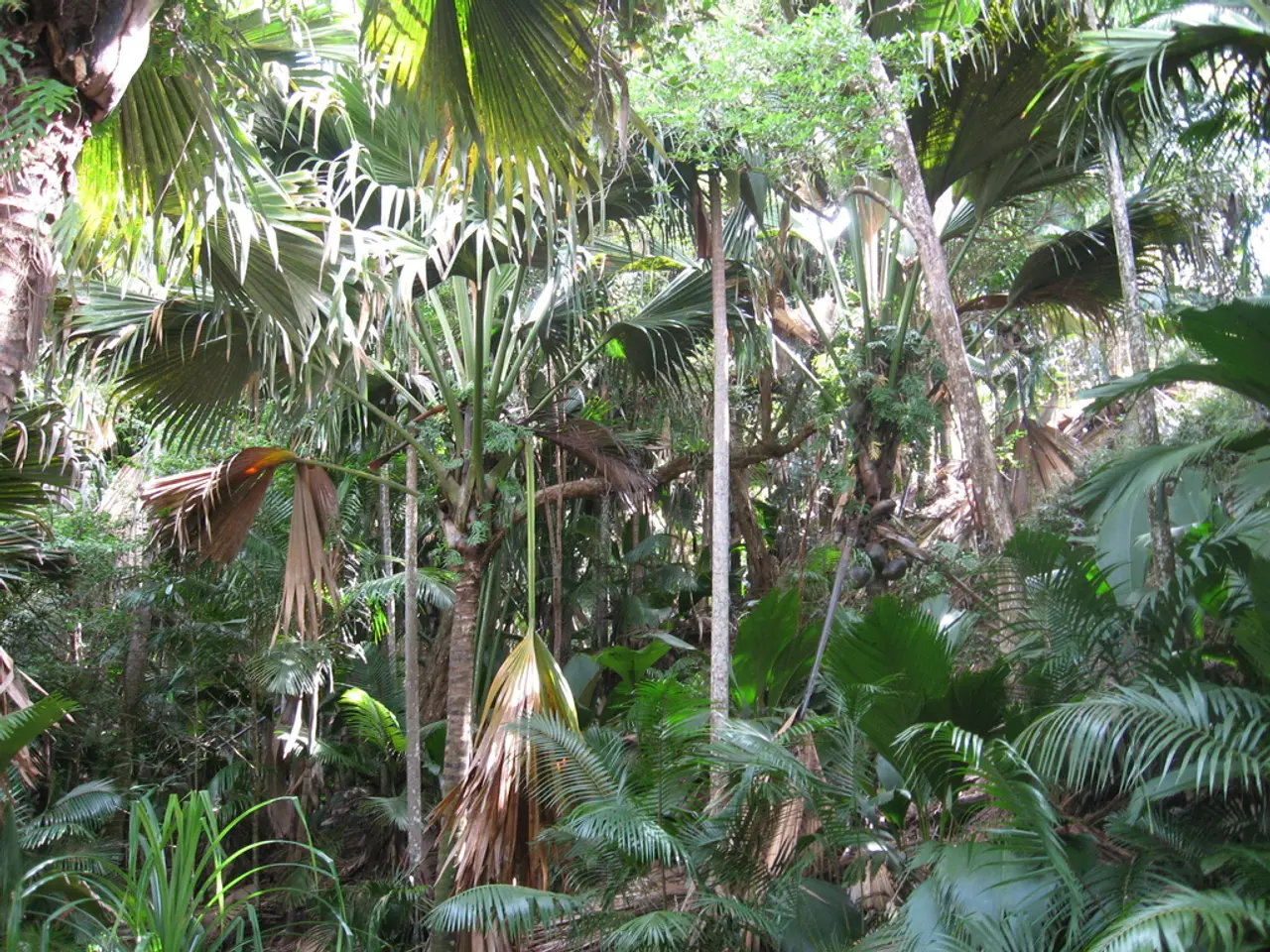Ground Sloth-Sustained Palm Trees: Their Survival in the Absence of Their Past Mega-Herbivores
In the vast landscapes of South and Central America millions of years ago, a symbiotic relationship flourished between the mighty palms and the giant ground sloths. This ancient partnership, now a living echo of a lost megafauna, continues to shape the world today.
Giant ground sloths were herbivores that relied on palm fruits as a staple food source. Some palm seeds are still adapted to pass through the guts of these massive herbivores, a testament to nature's remarkable ability to adapt. These "anachronistic fruits" are a fascinating relic of the past, offering a glimpse into the relationship between these two species.
The extinction of the giant ground sloths, around 10,000 to 12,000 years ago, marked a significant ecological shift for palm trees. Without their important seed disperser, many palm species have had to rely on alternate seed dispersers such as smaller mammals, birds, or other now extant animals. This shift means some palms may have experienced decreased seed dispersal distance and altered patterns of recruitment and regeneration, potentially influencing palm population structures and forest composition.
However, palms have not fundamentally transformed their biology or growth strategies. Some palms also reproduce clonally, which allows persistence even in the absence of efficient seed dispersers. This adaptability has ensured that palms remain a vibrant part of our planet's future.
Conservation and scientific efforts, including reviving extinct or nearly extinct palm species, demonstrate human intervention can influence palm persistence and adaptation over time. Yet, this is independent of natural evolutionary responses to sloth extinction.
The story of palms and sloths is a reminder that even when ancient partnerships are broken, life finds a way to endure. In some regions, humans now play a role in dispersing palm seeds, bringing the ancient partnership between sloths and palms full circle in a new and unexpected way.
Palms are architects of their ecosystems, creating cool, shaded microhabitats and feeding a host of animals, from monkeys to insects. The fate of palms remains uncertain due to climate change, deforestation, and the loss of animal partners. Yet, they have proven themselves astonishingly adaptable, finding new ways to persist in a world that never stops changing.
The partnership between sloths and palms was so profound that many palm species evolved large, tough fruits for sloth consumption and dispersal. The loss of giant sloths posed a problem for palm species, as their seeds were often too large for small animals to handle. However, nature's resilience and ingenuity have ensured that palms continue to thrive.
Humans have become both a threat and an unexpected ally to palms. Deforestation and habitat loss push some palm species toward extinction, while in other cases, people have learned to value and actively plant and tend them. The story of the palms that once fed the giant ground sloths is a living reminder of the invisible threads that connect all life, and the enduring power of adaptation in the face of loss.
- The relationship between giant ground sloths and palms, once a pillar of South and Central America's ecosystems, continues to have profound impacts on the world today.
- Climate change, deforestation, and loss of animal partners pose a threat to many palm species, but their remarkable adaptability keeps them resilient.
- In the realm of environmental-science, ongoing research reveals the unique role that insects play in the life cycle of various palm species.
- As home-and-garden enthusiasts strive for lush, green spaces, gardening techniques often incorporate palm trees, inadvertently promoting their conservation.
- Educational institutions have started incorporating the study of such symbiotic relationships, such as the one between sloths and palms, in their education-and-self-development curricula, emphasizing lifelong learning.
- Sustainable environmental lifestyle choices can also benefit palm populations, as more consumers opt for eco-friendly products derived from palms, creating a more symbiotic relationship between man and nature.
- Space exploration and research have even provided unique opportunities to study palm ecosystems beyond Earth, offering insights into the potential of palm adaptation across various climate zones.
- Conservation efforts continue to focus on not only preventing further extinction of palm species but also revitalizing those already on the brink, underscoring the significance of biodiversity conservation in today's rapidly changing climate.




